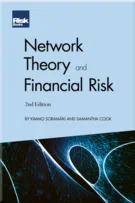The uncertain prudential treatment of cryptoassets
Lee Reiners
Foreword
Preface
Preface
Introduction: Suptech/regtech defined: Payments, sandboxes and beyond
The uncertain prudential treatment of cryptoassets
US regulatory certainty versus uncertainty for crypto and blockchain
Bermuda: Suptech and regtech supporting the risk-based approach
Suptech: A new era of supervisory philosophy
Cloud computing in the financial sector: A global perspective
DeFi protocol risks: The paradox of cryptofinance
IT transformation in the Prudential Authority of South Africa: A case study
Making the vision a reality: Perspectives from the Monetary Authority of Singapore
Lessons from Hong Kong through the lens of the HKMA
Technological change: Is it different this time?
The ECB’s suptech innovation house: Paving the way for digital transformation of banking supervision
China’s financing opening up and regulatory convergence with the world
Disclosures and market discipline: The promise of regtech
Regtech and new derivatives developments
Fintech and regtech: Leading the evolution and regulation of alternative investments
The role of artificial intelligence and big data in investment management
The promise and challenges of machine learning in finance
Data privacy and alternative data
Digital ID and financial inclusion
Strategic technology: Regulation and innovation of CBDCs
Regulatory sandboxes: Innovation and financial inclusion
Technology and sandbox development innovation in a transitional market: A case study
Developing the regulatory ecosystem: The evolution of stablecoin
Central bank digital currency, regtech and suptech
Digital dollar: Cryptocurrency for everyday commerce
CFTC regtech implications for virtual currency trading
Fintech, regtech, suptech and central bank decision making
For over a decade after Satoshi Nakamoto released his famous Bitcoin white paper in 2008, cryptocurrency and its progeny, such as stablecoins and digital asset tokens, were isolated from the traditional financial sector and were an asset class unto itself. However, slowly at first, the boundary between the cryptoasset sector and the legacy financial system began to blur, eventually reaching a point that the boundary was hardly visible.
Several key events catalysed crypto-asset integration in the US: the decision of the Commodity Futures Trading Commission (CFTC) in 2015 to classify Bitcoin as a commodity and the subsequent decision to permit the listing of cash-settled Bitcoin futures contracts in December 2017; the establishment of a first-of-its-kind state licensing regime for cryptocurrency firms (the BitLicense) by the New York Department of Financial Services in 2015 (Reiners, 2017); PayPal’s announcement in 2020 that they would allow customers to buy, hold and sell cryptocurrency directly from their PayPal account (PayPal, 2021); and Tesla’s revelation in early 2021 that they had bought US$1.5 billion in Bitcoin and began accepting it as payment (Brodkin, 2021). Despite
Copyright Infopro Digital Limited. All rights reserved.
As outlined in our terms and conditions, https://www.infopro-digital.com/terms-and-conditions/subscriptions/ (point 2.4), printing is limited to a single copy.
If you would like to purchase additional rights please email info@risk.net
Copyright Infopro Digital Limited. All rights reserved.
You may share this content using our article tools. As outlined in our terms and conditions, https://www.infopro-digital.com/terms-and-conditions/subscriptions/ (clause 2.4), an Authorised User may only make one copy of the materials for their own personal use. You must also comply with the restrictions in clause 2.5.
If you would like to purchase additional rights please email info@risk.net








